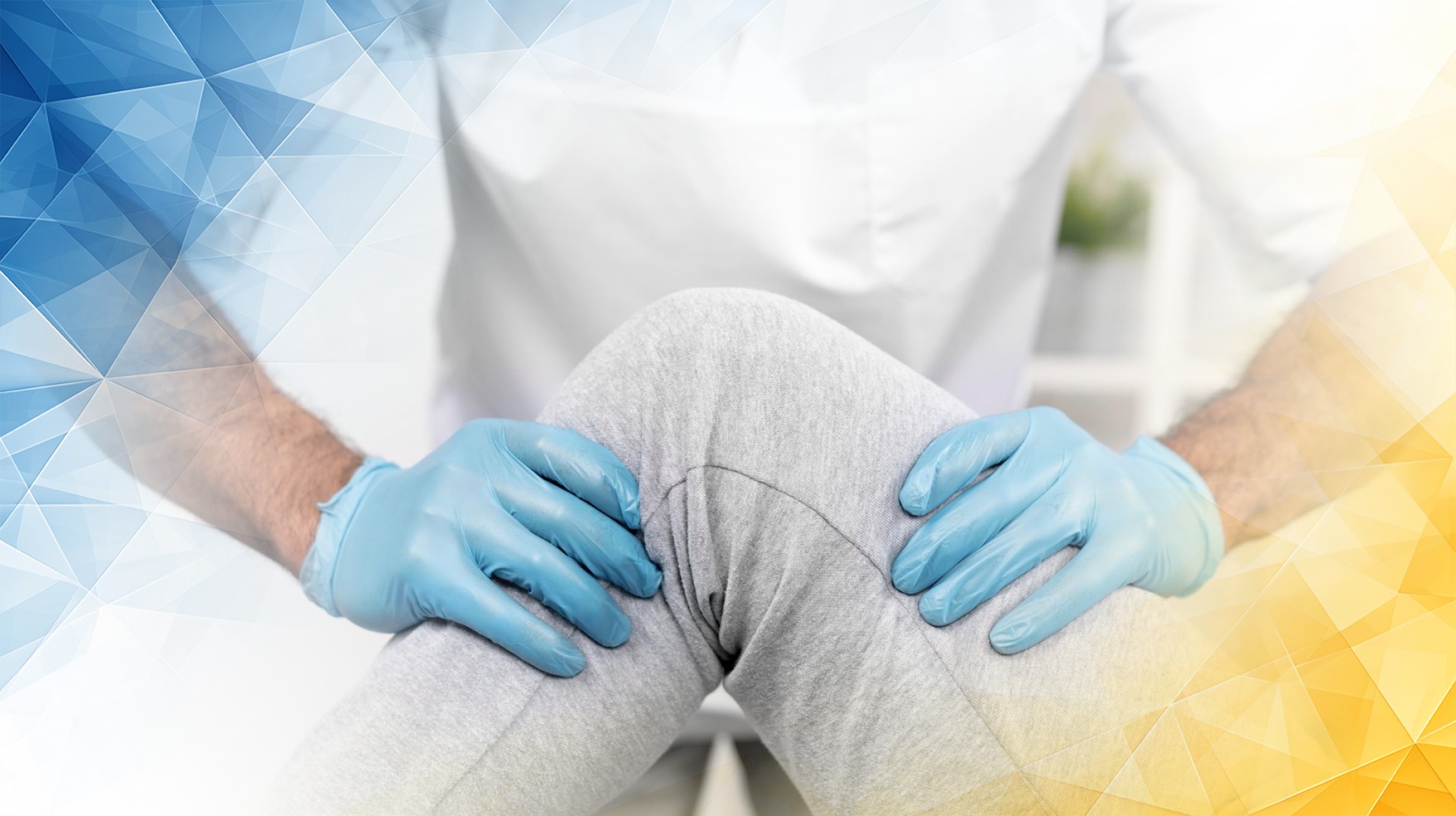



Our knees are essential for staying active, supporting our weight, and keeping us moving smoothly through daily life. So when a knee injury happens, finding out exactly what’s wrong is crucial for getting the right treatment and making a full recovery. One of the best tools doctors have for checking the stability of the knee is the Lachman test. Widely trusted for assessing the anterior cruciate ligament (ACL)—a major stabilizing ligament in the knee—it can sometimes also offer clues about other structures, like the meniscus . In this article, we’ll break down how the Lachman test works, what it reveals about ACL injuries , and how it can sometimes hint at meniscal issues as well.
The Lachman test is simple but powerful. To perform it, the patient’s knee is bent slightly (about 15 degrees). The examiner holds the thigh steady with one hand and gently pulls the shin bone (tibia) forward with the other. This motion checks how much the tibia moves in relation to the thigh bone (femur), helping doctors gauge the integrity of the ACL.
Why use the Lachman test instead of other methods, like the anterior drawer test? The answer is sensitivity—it’s better at detecting even subtle or partial ACL tears , especially soon after an injury. If the tibia moves forward more than expected and there’s a soft or “mushy” endpoint (rather than a firm stop), it points to a torn or compromised ACL. The Lachman test generally provides clearer results than the anterior drawer test, making it a mainstay in sports medicine and orthopedics.
There are also variations of the Lachman test. Research shows that factors such as the clinician’s technique, knee size, and patient relaxation can affect test accuracy. For instance, the prone Lachman test (performed with the patient lying face down) and the drop leg Lachman’s test are modifications developed to make the exam more sensitive and objective in certain scenarios.
Although the Lachman test isn’t designed to diagnose meniscus injuries, it can sometimes provide subtle hints when the meniscus is also damaged. The meniscus is a C-shaped cartilage that cushions and stabilizes the knee joint . During the Lachman test, unusual patterns in how the tibia moves—such as a sudden “catch,” buckling, or resistance—may suggest a meniscal tear. These indirect clues can prompt the clinician to investigate further, especially since meniscus injuries often occur alongside ACL tears.
Interestingly, studies have shown that variations in Lachman test technique (like the drop leg method) can result in greater movement of the tibia when the ACL is injured, highlighting how test style can impact the detection of both ligament and meniscal involvement.
Because ACL and meniscal injuries frequently happen together, using a combination of tests is important for an accurate diagnosis. While the Lachman test is highly effective for the ACL, other exams are designed specifically for the meniscus .
The McMurray test involves bending and rotating the knee to check for a click or pain, which can signal a meniscal tear. Meanwhile, the Thessaly test has the patient stand and gently twist on the affected leg, looking for sensations like pain or locking. These tests, when used alongside the Lachman test, allow doctors to distinguish between ligament and cartilage injuries , leading to more precise treatment plans.
The Lachman test remains the gold standard for detecting ACL injuries , but it’s also wise to remember that it can sometimes hint at meniscal damage. Recognizing these subtle signs encourages a more thorough and holistic approach. By combining the Lachman test with other, more targeted exams—and by paying close attention to nuanced findings—healthcare providers can make more accurate diagnoses and help patients recover faster and more fully, getting them back to their regular activities confidently and safely.
Dilbert A. Monicit, & Ambrosio Emilio S. Valdez. (2012). Comparative analysis of the classic Lachman’s test with the drop leg Lachman’s test. Acta Medica Philippina, 46(2). https://doi.org/10.47895/amp.v46i2.2149
Adler, G. G., Hoekman, R. A., & Beach, D. M. (1995). Drop leg Lachman test. The American Journal of Sports Medicine, 23(3), 320-323. https://doi.org/10.1177/036354659502300312
Norkus, S. A., Swartz, E. E., & Floyd, R. T. (2002). Advantages of the prone Lachman test. Athletic Therapy Today, 7(2), 52-56.
The Lachman test is a reliable way to assess the anterior cruciate ligament (ACL) after a knee injury. By checking for abnormal movement of the shin bone, it helps diagnose ACL tears early and accurately. At London Cartilage Clinic, Prof Lee uses this test to guide effective, personalised treatment.
While the Lachman test is designed for the ACL, it can sometimes reveal subtle signs of meniscal injury, such as unexpected catching or resistance. Prof Lee at London Cartilage Clinic pays close attention to these clues to ensure no underlying cartilage problems are missed in his comprehensive assessments.
London Cartilage Clinic, led by the highly experienced Prof Lee, offers the latest diagnostic methods and thorough clinical assessments. Prof Lee’s expertise ensures every patient receives accurate diagnosis and tailored treatment, promoting a swift and confident return to daily activities and sports.
Yes, at London Cartilage Clinic, Prof Lee combines the Lachman test with others like the McMurray and Thessaly tests. This holistic approach allows for precise distinction between ligament and cartilage injuries, ensuring each patient receives the most suitable treatment plan for optimal recovery.
Prof Lee’s extensive experience in sports medicine and orthopaedics means patients benefit from expert care and advanced techniques. His attention to detail, commitment to holistic diagnosis, and use of evidence-based treatments ensure the best possible outcomes for even the most complex knee injuries.
All our treatments are selected to help patients achieve the best possible outcomes and return to the quality of life they deserve. Get in touch if you have any questions.
At London Cartilage Clinic, we are constantly staying up-to-date on the latest treatment options for knee injuries and ongoing knee health issues. As a result, our patients have access to the best equipment, techniques, and expertise in the field, whether it’s for cartilage repair, regeneration, or replacement.
For the best in patient care and cartilage knowledge, contact London Cartilage Clinic today.
At London Cartilage Clinic, our team has spent years gaining an in-depth understanding of human biology and the skills necessary to provide a wide range of cartilage treatments. It’s our mission to administer comprehensive care through innovative solutions targeted at key areas, including cartilage injuries. During an initial consultation, one of our medical professionals will establish which path forward is best for you.
Contact us if you have any questions about the various treatment methods on offer.
Legal & Medical Disclaimer
This article is written by an independent contributor and reflects their own views and experience, not necessarily those of londoncartilage.com. It is provided for general information and education only and does not constitute medical advice, diagnosis, or treatment.
Always seek personalised advice from a qualified healthcare professional before making decisions about your health. londoncartilage.com accepts no responsibility for errors, omissions, third-party content, or any loss, damage, or injury arising from reliance on this material. If you believe this article contains inaccurate or infringing content, please contact us at [email protected].